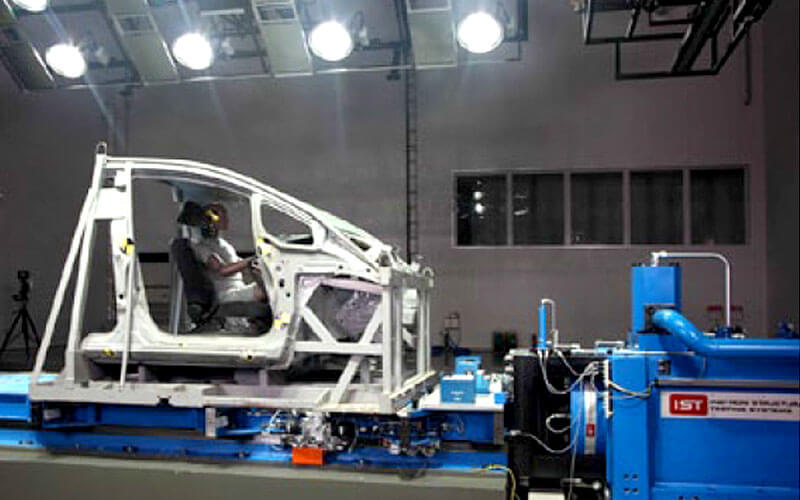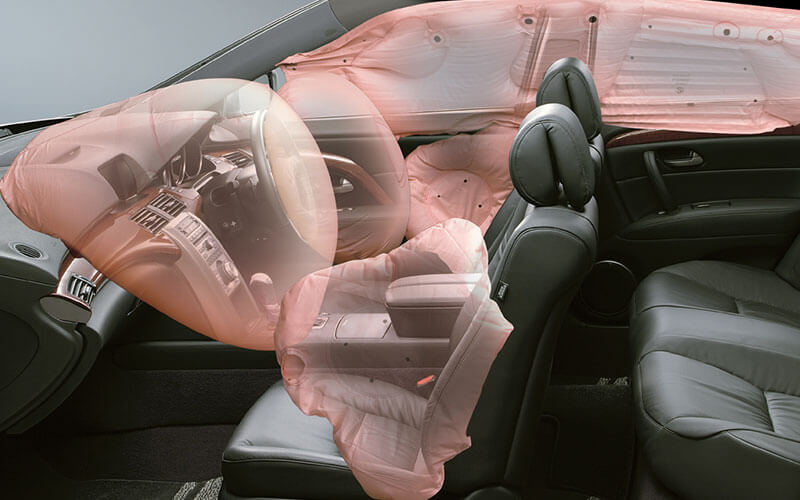In spite of the plea agreement making provision for compensation for car owners and for car makers’ recall costs, the lawyers are claiming that the agreement makes no difference to their case against car makers which they allege knew the airbags were dangerous and kept fitting them inspite of that knowledge.
According to papers lodged with the US District Court of Southern Florida, lawyers for affected car owners claim that engineers and management at Honda, Toyota, Ford, Nissan and BMW, despite receiving misleading assurances from Takata that their airbags were safe, knew that the airbag explosive was unstable and continued to fit Takata airbags “because they were cheaper”.
The lawyers say that documents produced so far in discovery (the forced disclosure of relevant emails, reports etc) show that the Automotive Defendants “were well aware of the risks inherent in filling a metal canister with ammonium nitrate – the notoriously unstable chemical compound Timothy McVeigh used to bomb the Oklahoma City federal building in 1995 – and placing it in a steering wheel or dashboard.
“The Automotive Defendants also were aware that rupture after rupture, both during testing and in the field, confirmed how dangerous and defective Takata’s airbags were,” they claim.
“In fact, following one such rupture in 2009, one Automotive Defendant chillingly and accurately described the event as “one in which a passenger protection device was transformed into a killing weapon.
“Despite this knowledge, the Automotive Defendants continued to equip their vehicles with Takata’s ticking time bombs and misrepresent to the unsuspecting public that their vehicles were safe, ultimately causing the largest automotive recall in United States history.”
The court papers said:“Takata’s admission of guilt neither excuses the Automotive Defendants’ own reckless, deceptive conduct” and that (the plea agreement) should not have any bearing on the economic loss of car owners.”
The papers allege that evidence already collected from car makers “establishes that the Automotive Defendants, staffed with teams of sophisticated engineers, were
far from innocent, unsuspecting victims, as they now claim to be”.
“For the Automotive Defendants to call themselves victims, insults the real victims here – hundreds of people who have been seriously injured or killed by a device that was supposed to protect them, and tens of millions of vehicle owners who have been forced to bear the risk of such injury and incurred substantial economic damages, including out-of-pocket expenses, diminution of vehicle value, lost time and overpayment for an indisputably defective product.”

The lawyers allege the Automotive Defendants “had independent knowledge, that is, other information, that Takata’s airbag inflators were not safe well before installing them in millions of vehicles”.
The papers say that, according to documents produced in discovery, including documents from car makers, the Automotive Defendants “acted so recklessly because they were focused on the low price of Takata’s inflators and concerned that if they stopped using Takata’s inflators, they might not have a sufficient supply, which would prevent them from selling vehicles and generating billions of dollars in revenue”.
“Indeed, some of the Automotive Defendants continued to sell vehicles
equipped with ammonium-nitrate inflators in 2016, well after allegations of Takata’s test-result deception became public, completely disproving their claim that they would have acted differently had they been told the truth about Takata’s test results.
The court papers say that more work remains to be done in discovery, but have listed “only a few examples of the evidence uncovered so far regarding “just a few of the Automotive Defendants”:
Honda
- Honda’s emails and internal documents show that it picked Takata’s inflators due to their relative “inexpensiveness”
- In 1999 and 2000, Honda was intimately involved in the design of Takata’s ammonium-nitrate propellant and chose the “batwing” shape, over Takata’s objections
- During testing of Takata’s inflators in 1999 and 2000 at Honda’s own facilities, at least two inflators ruptured
- In 2004, ten years before the national recall, Honda learned of a field rupture in Alabama, which severely injured the driver
- In 2006, Takata’s manufacturing plant in Mexico suffered a massive explosion fueled by ammonium nitrate, of which Honda was made aware
- Before Honda initiated its first, narrow recall in 2008, at least eight ruptures had occurred in Honda vehicles – six in the field and two during the design phase
- By the end of 2009, at least 14 field ruptures had occurred in Honda vehicles, including the first fatality
- By the end of 2011, at least 27 field ruptures had occurred in Honda vehicles, still three years before it initiated a nationwide recall
- In 2012, documents show that Honda believed that Takata was an “untrustworthy company,” yet still continued to use Takata’s inflators for several more years and refused to initiate a nationwide recall
- When Honda finally initiated a nationwide recall in 2014, at least 77 field ruptures had occurred in Honda vehicles, a figure that grew to at least 117 by March 2016

Toyota
- Toyota chose Takata’s inflators “primarily” because of costs, even though, as early as 2003, Toyota had “large quality concerns” about Takata and considered Takata’s quality performance “unacceptable”
- In 2003, a Takata inflator ruptured at a Toyota facility during testing
- In 2009 -five years before the nationwide recall – Toyota became aware of a field rupture in a Toyota vehicle
- At least 15 ruptures occurred in Toyota vehicles by 2014, when a nationwide recall was initiated
- Despite the recall, Toyota continued to equip and sell vehicles with inflators containing non-desiccated ammonium nitrate
Ford
- Ford chose Takata’s inflators over the objections of Ford’s own inflator expert who was opposed to the use of ammonium nitrate because of its phase instability and moisture sensitivity – characteristics that make ammonium nitrate unsuitable as an inflator propellant and have contributed to ruptures
- Ford approved the use of Takata’s inflators even though it was aware that they did not meet the USCAR specifications that Ford itself helped draft
- These specifications, as early as 2000, singled out separate requirements for inflators containing ammonium nitrate, acknowledging their unique risks
- Ford overrode the objections of its own inflator expert because Takata was apparently the only supplier that could provide the amount of inflators that Ford needed. As one document states, Ford had “a gun to its head so it had to accept ammonium nitrate”. This “gun” was of Ford’s own making as it failed to secure a backup supplier for inflators
- Ford was aware that Takata’s ammonium-nitrate inflators were cheaper than safer guanidine-nitrate inflators
- Ford was aware that numerous ruptures had occurred during testing of Takata’s inflators in November 2004
- Recognizing the risk of Takata’s ammonium-nitrate propellant, Ford insisted on adding desiccant, a drying agent, to the propellant for certain inflators beginning around 2005. Yet for almost a decade after that, it continued to equip and sell vehicles with inflators containing non-desiccated ammonium nitrate

Nissan
- Nissan switched to Takata’s inflators primarily, if not solely, to reduce costs approximately $US4 per inflator
- In late 2005, Nissan began investigating adding desiccant, a drying agent, to the ammonium-nitrate propellant because of concerns that moisture would destabilize the existing propellant
- In August 2006, eight years before Nissan initiated a nationwide recall, another automaker told Nissan that it had rejected Takata’s inflators because they were too risky, warning Nissan that Takata’s inflators had “a lot of potential problems,” that they used a “risky propellant . . . explosive with phase changes not correctly under control,” that they had a “hard design . . . not correctly adapted to the risky propellant,” and that “pellets can jump out of the inflator”
- One month after Nissan received this specific warning, Takata made a presentation about guanidine-nitrate inflators, reporting that they would be significantly more expensive; following the presentation, Nissan continued to use ammonium-nitrate inflators
- In 2008, Takata reported that Takata’s testing revealed instances of “energetic disassembly,” one of the many euphemisms for ruptures, in passenger-side inflators
- By the end of 2014, at least eight field ruptures had occurred in Nissan vehicles, and by the end of 2015, at least 13 field ruptures had occurred
BMW
The court papers said the lawyers had the fewest records for BMW because BMW AG has refused to accept service (of legal demands) or produce records through its subsidiary. However the limited documents produced so far still show “that BMW was culpable”.
The lawyers alleged:
- Documents show that “cost saving” drove BMW to choose Takata inflators
- In 2003, a Takata inflator in a BMW ruptured in Switzerland, with a metal shard ripping through the airbag
- In 2009, Takata alerted BMW of ruptures in other manufacturers’ vehicles that used the same inflators that BMW used
- In March 2010, BMW told NHTSA that it was unaware of any field incidents, despite the fact that it knew of the 2003 rupture in Switzerland
The court papers concluded that these examples demonstrated “significant, concrete evidence, not simply allegations, showing that the Automotive Defendants were aware of how dangerous and risky Takata’s inflators were, but continued to use them anyway because they were cheap while misleading consumers into believing that their vehicles were safe.
The lawyers said Takata’s plea agreement “could not make this evidence magically disappear”.
By John Mellor













 Read More: Related articles
Read More: Related articles

